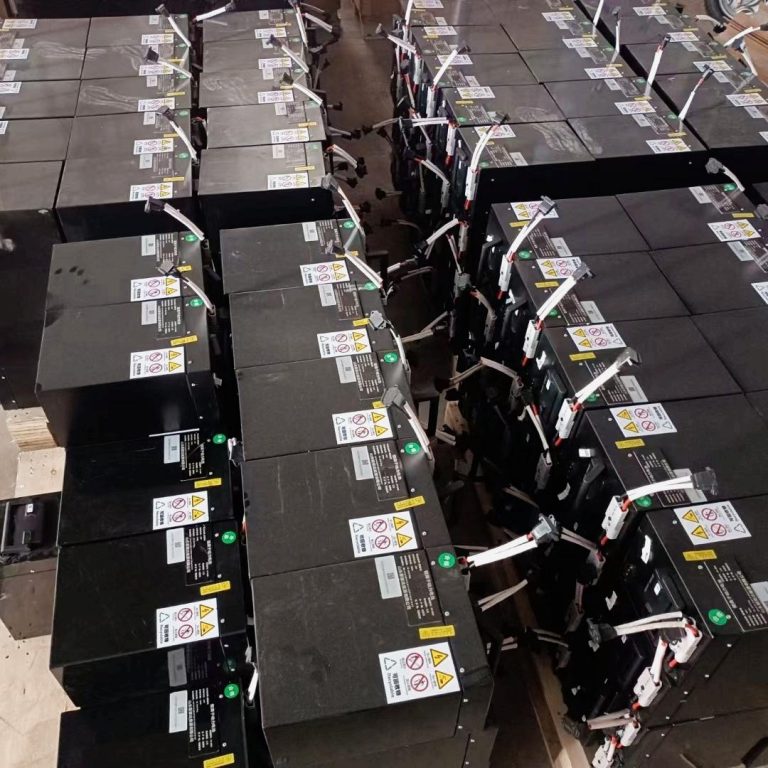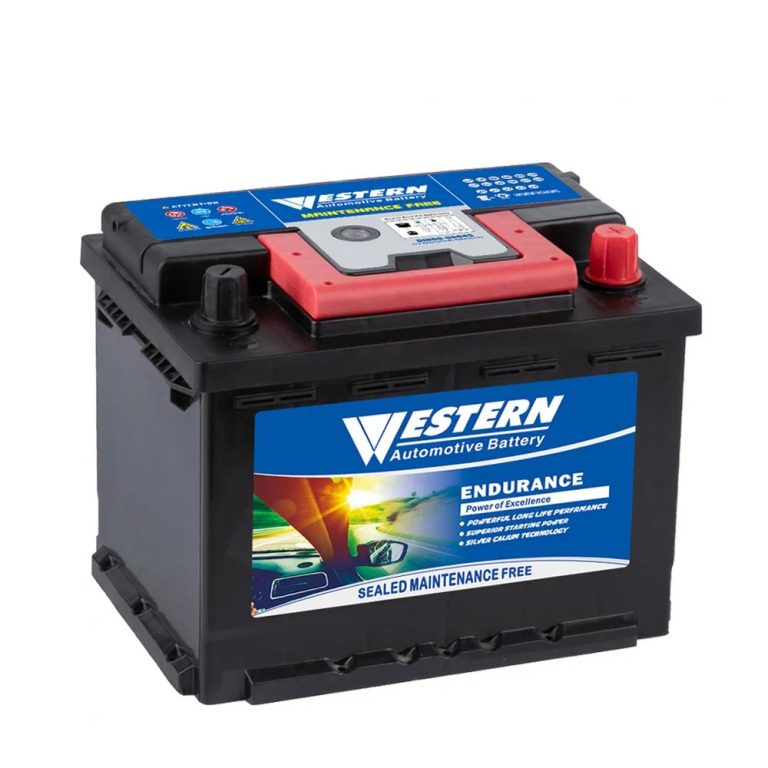Where to Recycle Lead Acid Batteries?4 Key Things You Should Know
Where to Recycle Lead Acid Batteries?Many people ask this question, but there are actually many related issues that people may not be aware of. So, let’s take a deeper look into the topic of lead-acid battery recycling.
Lead acid batteries have been in use for decades in applications such as automotive starting batteries and backup power supplies. However, if these batteries are not properly recycled and processed after their useful life, they can pose serious environmental and health risks. This blog explores in detail the internal components of lead acid batteries, their environmental hazards, recycling methods, global recycling channels, post-recycling processing, and the issues surrounding refurbished batteries. Detailed comparisons using tables, hypothetical cases, and data sources are provided to help you understand how to recycle lead acid batteries safely and efficiently.

I. Decomposing Lead Acid Battery Components and Environmental Hazards
1.1 Main Components and Their Materials
Casing
- Material: Typically made from corrosion-resistant plastics such as polypropylene (PP).
- Environmental Analysis: Although plastics are recyclable, improper handling may lead to microplastic pollution, which poses a long-term threat to ecosystems.
Electrode Plates
- Material: The positive plate is usually made from lead dioxide (PbO₂), while the negative plate is composed of sponge lead. During charge and discharge cycles, lead sulfate (PbSO₄) is formed.
- Environmental Analysis: Lead and its compounds are heavy metals that can accumulate in soil and water, entering the food chain and causing severe health risks to the nervous system, kidneys, and other organs.
- Data Source: EPA, International Battery Association.
Electrolyte
- Component: A solution of concentrated sulfuric acid (H₂SO₄ mixed with H₂O).
- Environmental Analysis: Sulfuric acid is highly corrosive; spills can alter the pH balance of soil and water bodies, adversely affecting plant and animal life.
- Data Source: Environmental Protection Studies.
Separators
- Material: Often made of fiberglass or synthetic resin.
- Environmental Analysis: Although not highly toxic, if not properly managed alongside other hazardous materials, they may contribute to particulate pollution.
Additional Components
- Examples: Terminal connectors, soldering materials, etc.
- Environmental Analysis: While these make up a smaller portion of the battery, improper recycling can still lead to environmental contamination from electronic waste.
1.2 Environmental Classification and Main Hazards
From an environmental standpoint, the components of lead acid batteries can be broadly classified into:
Toxic and Hazardous Materials
- Key Examples: Lead and its compounds, concentrated sulfuric acid.
- Primary Hazards:
- Lead: Lead persists in the environment, contaminating soil and water, and poses long-term health risks via bioaccumulation.
- Sulfuric Acid: Its corrosiveness can lead to localized acidification, equipment damage, and chemical burns.
Renewable Resource Materials
- Key Examples: Plastic casing and certain metals that can be re-melted and reused in new batteries.
- Environmental Benefit:
- Efficient recycling can reduce resource waste and lower the environmental footprint of new material production.
- However, if recycled improperly, even these materials may contribute to secondary pollution.
- Data Source: International Solid Waste Management Reports.
II. How to Recycle Lead Acid Batteries?
Recycling lead acid batteries involves several methods. Below is a table comparing three major recycling approaches, along with their advantages, disadvantages, and appropriate scenarios.
| Recycling Method | Advantages | Disadvantages | Suitable Scenarios |
|---|---|---|---|
| Professional Recycling | High environmental safety; efficient resource recovery; full tracking | High processing costs; limited facilities in some regions | Urban areas with established recycling centers |
| Automated Processing Plants | High throughput; reduced human exposure to toxic materials | High initial investment; requires strict maintenance and upgrades | Large-scale centralized recycling operations |
| Decentralized Collection | Convenient for consumers; increases public participation; lowers transport costs | Difficult management; potential mix with non-compliant batteries may disrupt the recycling chain | Community centers, repair shops, supermarkets |
Detailed Explanation:
Professional Recycling:
Batteries are collected and sent to specialized facilities where manual or mechanical disassembly separates the casing, electrode plates, electrolyte, and separators. This method minimizes environmental risks but comes with higher operational costs and may not be available in all regions.- Data Source: National Hazardous Waste Management Departments.
Automated Processing Plants:
Automated equipment, such as robotic arms and conveyor belts, disassembles the batteries quickly and safely, reducing human contact with hazardous materials. The main drawbacks are the significant upfront investment and ongoing maintenance costs.- Data Source: European Environmental Management Agencies.
Decentralized Collection:
Collection bins placed in communities, auto repair shops, or supermarkets allow easy battery drop-off. Batteries are later transported to professional facilities. This method increases convenience but can suffer from fragmented management and lower recycling efficiency if improperly coordinated.- Data Source: Local Environmental Protection Bureau Reports.
III. Where to Recycle Lead Acid Batteries? The Global Recycling Channels for Lead Acid Batteries
Different countries have developed unique policies and recycling channels for lead acid batteries. The table below summarizes the recycling systems, typical recycling channels, and examples of recycling agencies/companies (with hypothetical contact information where applicable).
| Country | Policy Requirements | Main Recycling Channels | Typical Recycling Agency/Company | Contact Information/Website |
|---|---|---|---|---|
| China | Strict implementation of “Hazardous Waste Disposal Regulations”; specialized recycling required | Community collection bins, auto repair shops, specialized recycling enterprises | Green Energy Environmental Technology, Zhongkong Environmental Protection | Phone: 021-12345678 (hypothetical); refer to Ministry of Environmental Protection website |
| USA | EPA mandates that all batteries containing lead and acid be recycled through certified channels | Retail recycling bins (e.g., Walmart, Home Depot), specialized recycling programs | Call2Recycle | Phone: 1-800-929-2727; Website: www.call2recycle.org |
| Germany | Strict regulations for electronic waste; recycling bins required at points of sale | Retail store drop-offs, specialized processing centers | Umicore Recycling | Website: www.umicore.com (check for local contact details) |
| Japan | Extended Producer Responsibility (EPR) requires manufacturers to handle recycling | Manufacturer-led collection, retail drop-off points | Panasonic, GS Yuasa | Contact details available on respective corporate websites |
Detailed Explanation:
China:
Many urban areas have fixed collection bins for waste batteries. Specialized enterprises (e.g., “Green Energy Environmental Technology”) offer door-to-door collection and adhere to strict environmental standards as mandated by local authorities.- Data Source: Ministry of Environmental Protection of China.
USA:
Large retailers such as Walmart and Home Depot provide battery recycling bins, supported by initiatives like Call2Recycle, which covers battery recycling nationwide to ensure all batteries are processed through approved channels.- Data Source: EPA and Call2Recycle official reports.
Germany:
Recycling is rigorously regulated with every electronics point-of-sale required to have a collection bin. Companies like Umicore Recycling handle the subsequent processing.- Data Source: German Federal Environment Agency and Umicore official data.
Japan:
Under the EPR system, battery manufacturers such as Panasonic and GS Yuasa are responsible for recycling. Collection points are often located at specialized stores and designated drop-off sites.- Data Source: Ministry of Economy, Trade and Industry (Japan).
IV. Post-Recycling Processing and the Issue of Refurbished Batteries
4.1 Processing Steps After Recycling
Once collected, lead acid batteries undergo a series of processing steps:
- Collection and Transportation
- Batteries are gathered from various collection points and transported to specialized processing centers.
- Disassembly and Sorting
- Manual or mechanical methods are used to separate the casing, electrode plates, electrolyte, and separators.
- Neutralization and Chemical Treatment
- The sulfuric acid electrolyte is neutralized to prevent secondary pollution.
- Metal Recovery
- Lead from the electrode plates is melted and purified, then recycled as raw material for new batteries.
- Recycling of Plastics
- The plastic casing is washed, shredded, and processed into recycled plastic products.
4.2 Refurbishment Issues and Preventative Measures
In some markets, refurbishing old lead acid batteries is practiced to reduce costs or extend product life. However, refurbished batteries come with several risks:
- Unstable Performance:
After multiple charge-discharge cycles, the battery may lose capacity and exhibit increased internal resistance, affecting reliability. - Safety Hazards:
Incomplete removal of degraded components during refurbishment can lead to leakage, short circuits, or even explosions. - Environmental Risks:
If refurbishment does not completely eliminate hazardous substances, the battery may continue to pollute the environment during use.
How to Identify and Avoid Refurbished Batteries:
- Check Product Labels:
Authentic products typically display clear manufacturing dates, batch numbers, and anti-counterfeit labels. - Compare Technical Specifications:
Verify capacity and internal resistance against manufacturer standards using appropriate testing equipment. - Request Certification Reports:
Reputable sellers usually provide quality and testing certificates along with the product. - Buy from Trusted Sources:
Prefer purchasing directly from manufacturer websites, certified distributors, or well-known retail chains to minimize the risk of encountering refurbished products.
Hypothetical Case:
A consumer purchases “new” lead acid batteries online at an unusually low price. Upon testing, the batteries deliver only 70% of their stated capacity with abnormally high internal resistance, suggesting that they may have been refurbished. The consumer then contacts the regulatory authorities and a professional testing service to verify the quality, highlighting the importance of purchasing from reputable sources.
- Data Source: China Quality Supervision and Inspection Bureau, Consumer Protection Association.
V. Conclusion
Lead acid batteries are critical for energy storage, yet their improper disposal poses severe environmental and health risks. Key points include:
Component Breakdown and Hazard Analysis:
Hazardous materials like lead and sulfuric acid, if not properly handled, can contaminate soil and water, whereas plastics and certain metals hold significant recycling value.Diverse Recycling Methods:
Professional recycling, automated processing plants, and decentralized collection each have unique advantages and challenges. The comparison tables above provide a clear overview of their respective pros and cons.Global Recycling Networks:
Countries such as China, the USA, Germany, and Japan have developed comprehensive recycling systems that comply with strict environmental policies. These systems ensure that used batteries are processed safely, though differences in local policies and infrastructure exist.Post-Recycling Processing and Refurbishment Concerns:
Proper processing includes neutralizing harmful substances and recovering valuable materials. Consumers should also be cautious of refurbished batteries by verifying labels, technical parameters, and purchasing from trusted vendors.
Through coordinated efforts among governments, businesses, and consumers, recycling lead acid batteries can significantly reduce environmental pollution and contribute to sustainable resource management.
Data Sources:
- U.S. Environmental Protection Agency (EPA)
- Ministry of Environmental Protection of China
- Call2Recycle Official Reports (2020)
- German Federal Environment Agency and Umicore Data
- Japan’s Ministry of Economy, Trade and Industry
- China Quality Supervision and Inspection Bureau
By improving recycling technologies and ensuring strict regulatory oversight, we can turn lead acid batteries into valuable recyclable materials that support environmental protection and sustainable development.

















